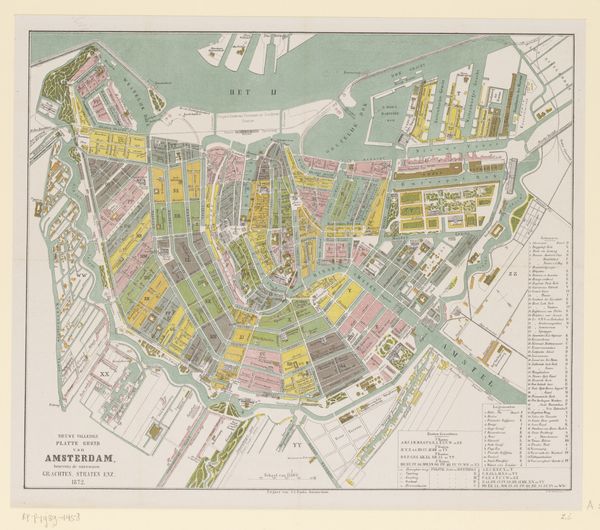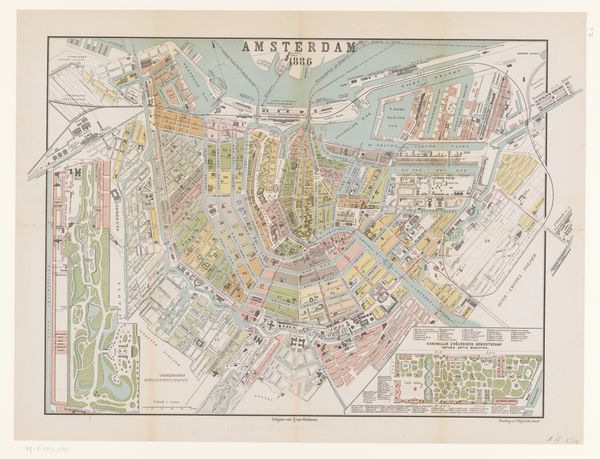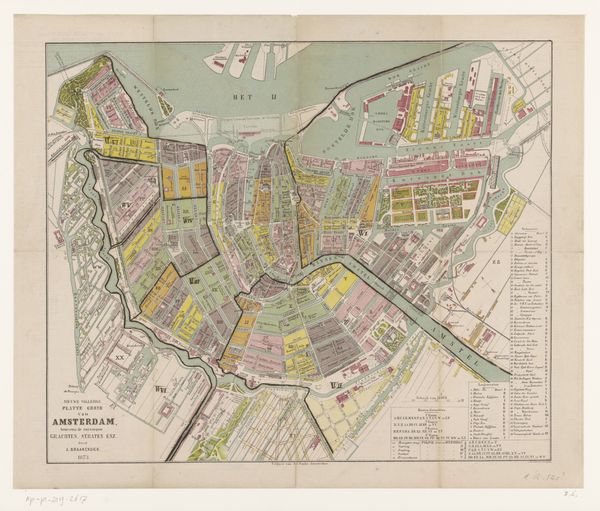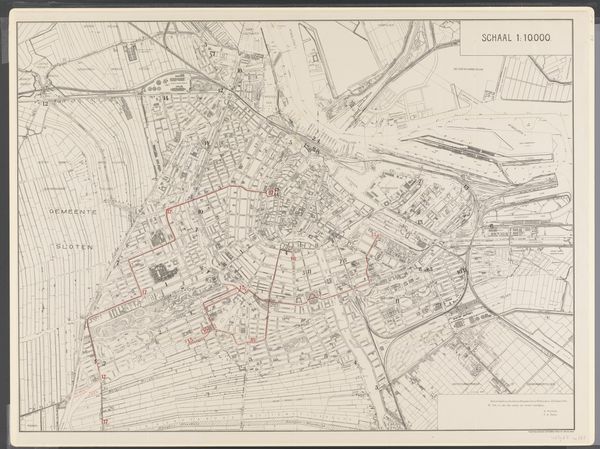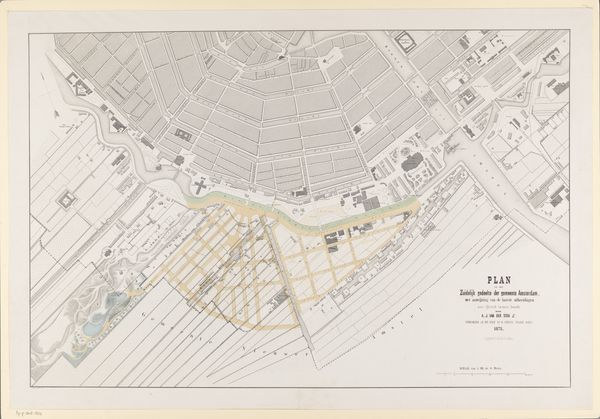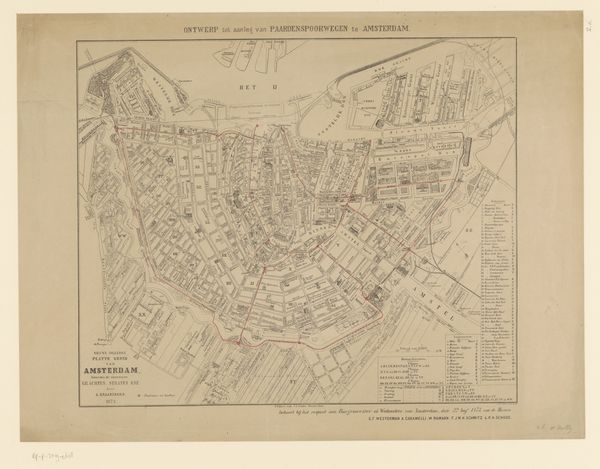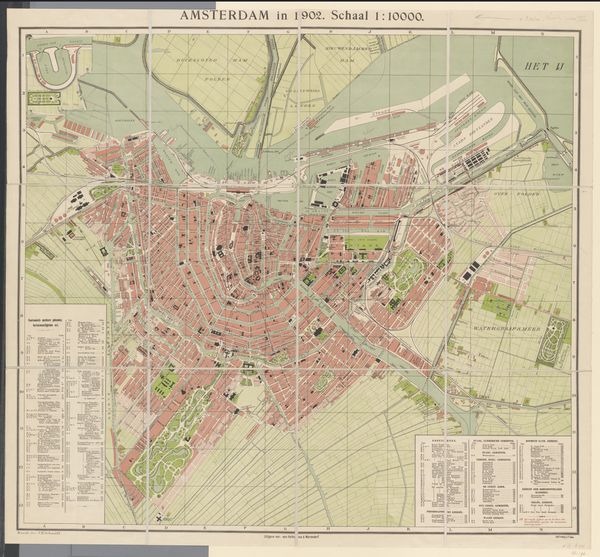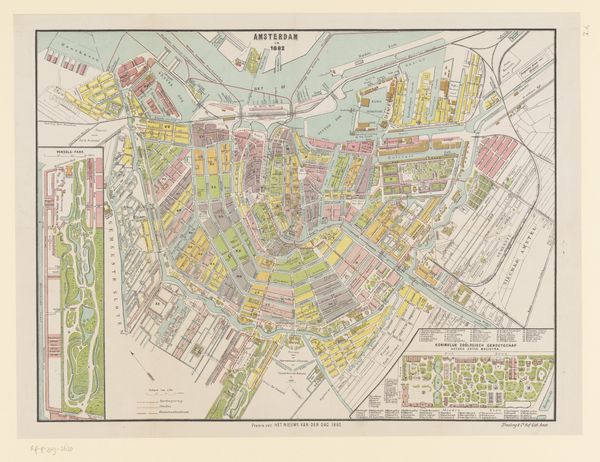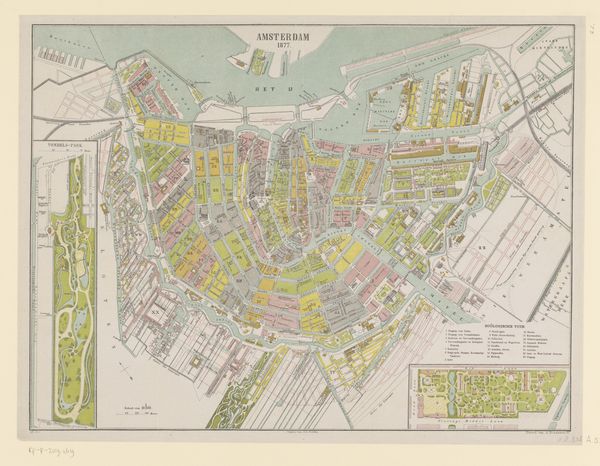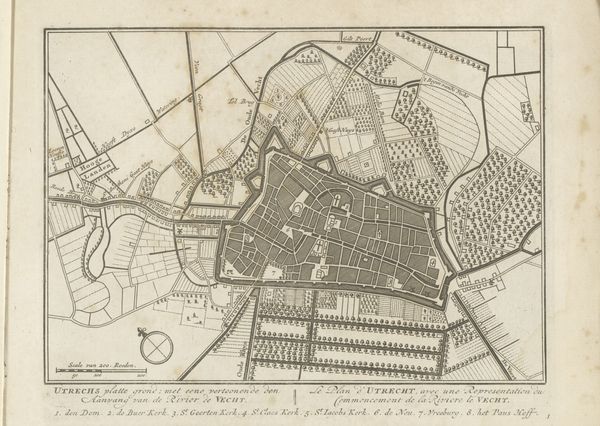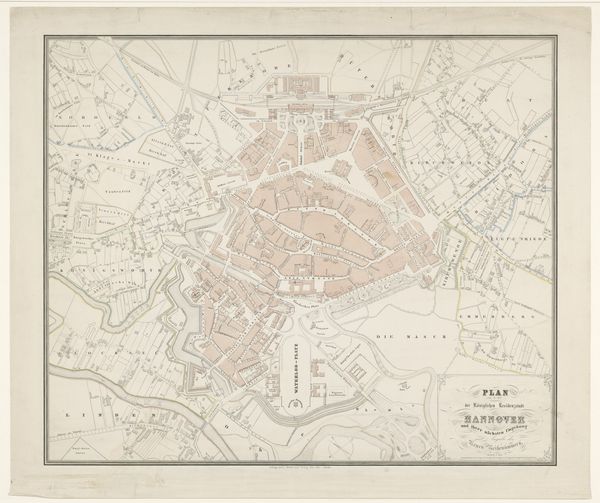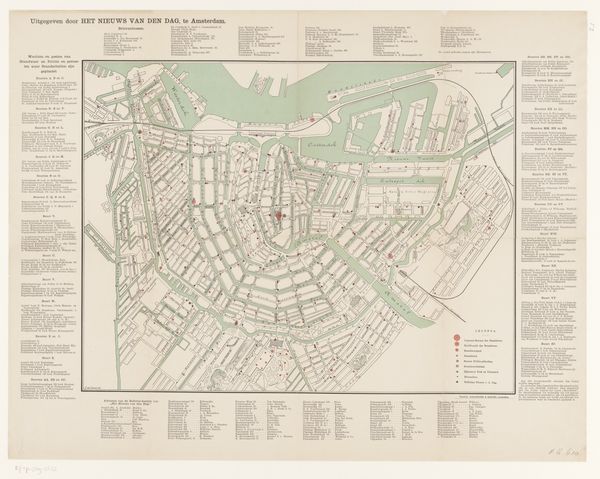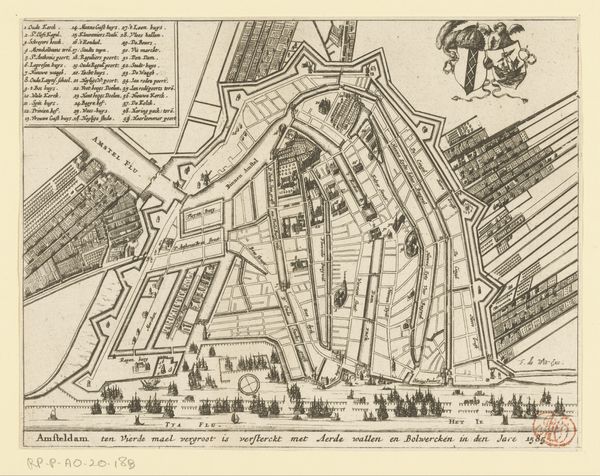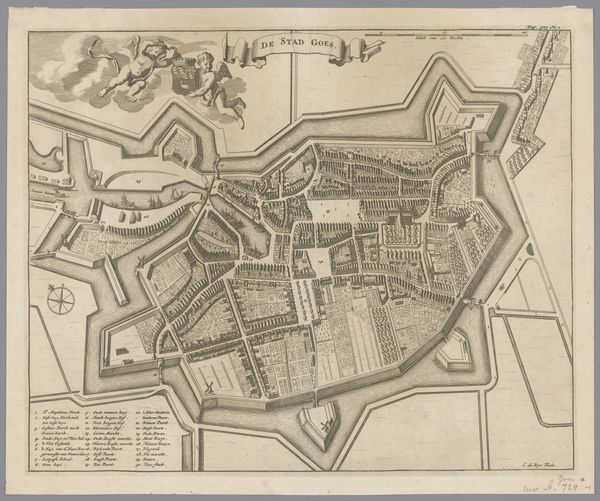
print, etching
# print
#
etching
#
etching
#
architectural drawing
#
cityscape
Dimensions: height 584 mm, width 658 mm
Copyright: Rijks Museum: Open Domain
Curator: Looking at this intricate map, one is immediately drawn into the vibrant details that bring Amsterdam to life in 1878. The cartographer here is Arnaud A.J. Pistoor, working in the etching medium to achieve remarkable precision. Editor: Yes, that etched precision lends such authority. But the pastel washes that fill the various sectors of the plan remind me more of anatomical diagrams, the organs of the city splayed for inspection. Curator: A striking interpretation! Each color-coded area on the print signifies population density in certain districts, revealing the city’s pulse through statistics represented visually. Red, for example, indicated the most crowded neighborhoods. Editor: It is as though the architect’s blueprint has been infiltrated by the doctor’s chart, the urban body put to clinical account! Beyond this diagnostic layer, what can you tell us about the cultural import of this visualization? Curator: Well, urban cartography often reveals ambition beyond mere record keeping. Consider the psychological weight of boundaries: what are citizens supposed to feel when beholding such graphic stratification, the different classes defined in a color key? And the street grid – what does its pattern telegraph about Amsterdam’s future? Editor: You’ve got me pondering how urban design can subtly encode a society’s values, its hidden hierarchies. I mean, looking at this ordered landscape, I cannot help thinking about power structures and their visual assertion... It serves almost like an infographic justifying the socio-political lay of the land, doesn't it? Curator: Indeed. It is fascinating to trace how graphic depictions like this can normalize and reify existing social stratifications, encoding these in our collective urban memory. Editor: In a sense, a seemingly objective 'map' becomes a loaded artifact, bearing witness to—and subtly bolstering—a specific ideological frame. Thanks to your perspective, I view this bird’s-eye view with far less naiveté and more awareness. Curator: And I value how you pushed me to think more deeply about its less-than-neutral use of imagery in shaping socio-political realities. A city plan reflecting cultural memory, laid bare through symbols and history.
Comments
No comments
Be the first to comment and join the conversation on the ultimate creative platform.
